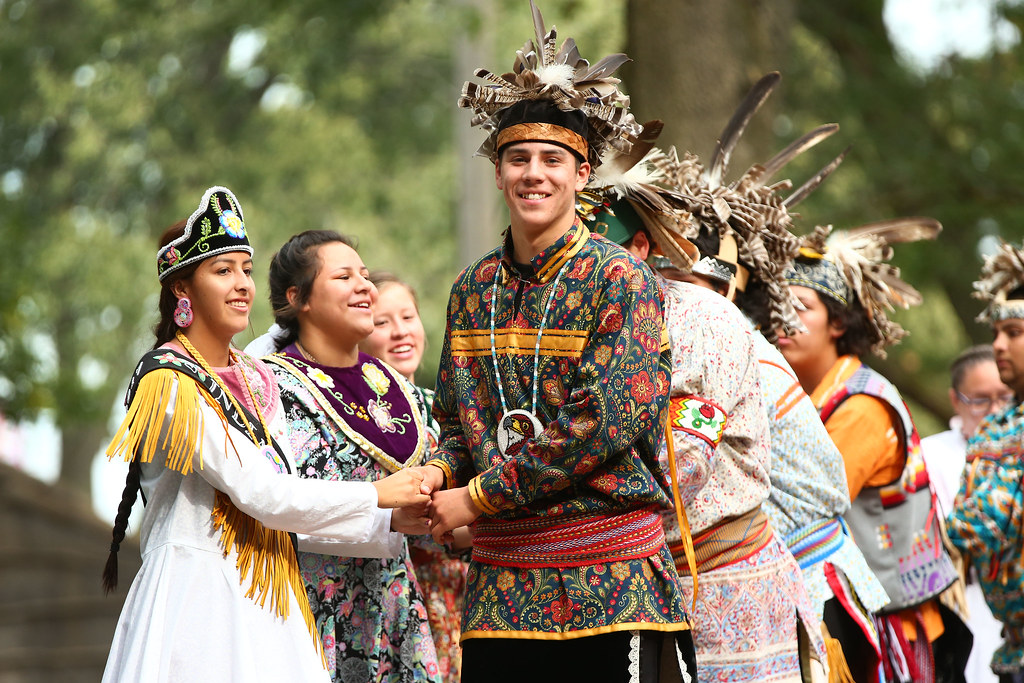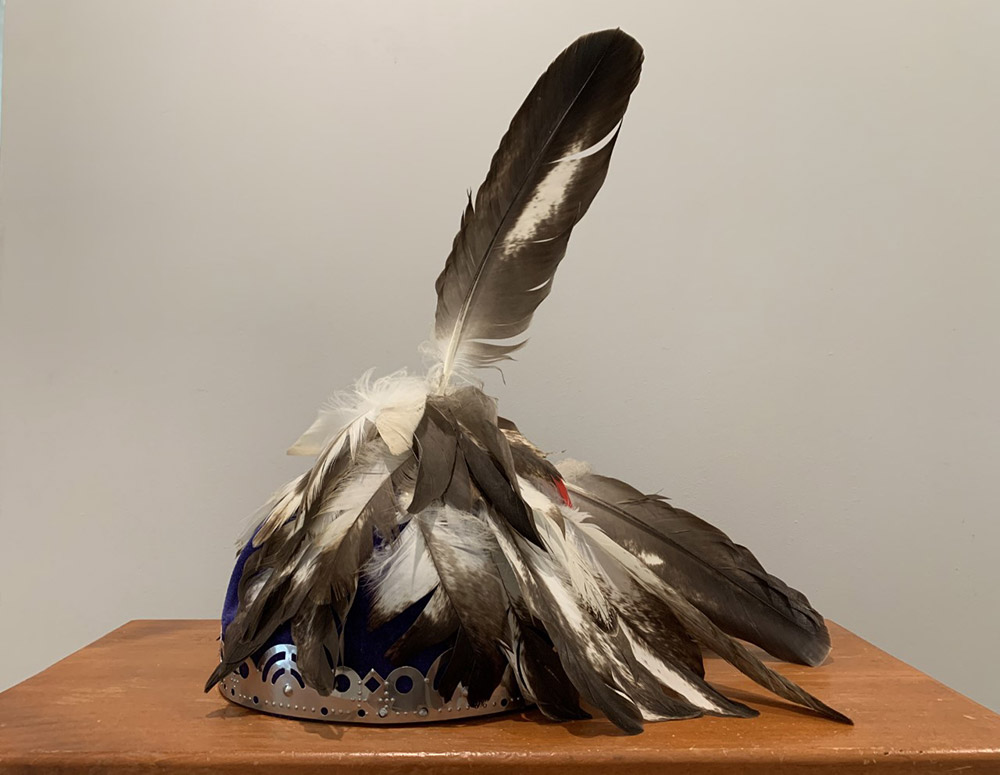
The Onondaga people and the rest of the nations of the Haudenosaunee had their own style. Since we are woodland people, we dress different that natives peoples who reside in the plains. Feathers that cascade away from a person’s body is indeed well suited for the open plains but not for carving your way through wooded paths.
Long ago, the Onondagas relied on the animals to provide clothing. The deer was obviously a great source for food and clothing. The all parts of the deer were utilized. The brain was used to help cure and tan the hide. The hide was used for dresses, leggings, moccasins, aprons, and wraps. Sinew was made from the deer for sewing and for making bows, the bone of the deer was used to make knives, arrowheads, and elaborate combs.
Then after contact with our white brothers, we began to adapt their clothing materials to our style of clothing. Beads made from clam shells or dyed porcupine quills and sinew were gradually replaced by glass beads and cotton thread. The women wore loose fitting blouses often decorated with a beaded yoke. Woolen skirts and leggings now began to be decorated with bead-work. But nothing hasn’t replaced the feel of deerskin moccasins lined with rabbit fur.
The men have gone through similar changes in dress. Leggings once solely made of deer, are at time substituted with wool. And the transition to men always wearing decorative shirts is relatively new to our area. In fact when the Tuscaroras first joined the Haudenosaunee in the late 1700’s, they we identified as “The Shirt Wearers”.
The Gasdó•wä•’
The distinctive feature of the men’s Haudenosaunee dress is our headgear. The gasdó•wä•’ is a fitted hat made of strips of wood. The wood is then covered and adorned with eagle, hawk, pheasant, or turkey feathers. The gasdó•wä•’ is also used to identify an individual’s nation. A man wearing his gasdó•wä•’ with one feather pointing upward and another pointing downwards, indicates he is Onondaga. A man who has one feather pointing skyward is identified as Seneca. Each nation has their own way of identifying each other by our gasdó•wä•’.

